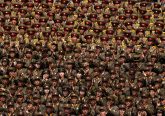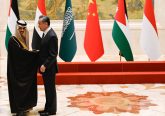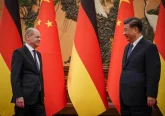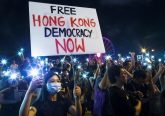US administrations may change, but the North Korean problem, in all its guises, has plagued the United States for at least the past thirty years. The new Commander-in-Chief, Joe Biden, and his administration are facing increasing calls from the broader international community to clarify US policy towards East Asia, which includes China, Japan, and the two Koreas. The last Democratic administration, that of Barack Obama, focused on strengthening US bilateral alliances within the East Asian region, regional stability, and bolstering relationships with emerging powers. Yet, it did not fully address one of the greatest geopolitical challenges in the region: North Korea’s nuclear program. During the Obama administration, North Korea conducted four nuclear tests, one of which it claimed to be of a hydrogen bomb. As a result—as noted by Bob Woodward—Obama warned his Republican successor in no uncertain terms, that North Korea (DPRK) would be the US’s “biggest, most dangerous, and most time-consuming problem.”
Now, with the Trump administration out, and the return of the Democrats, will we see a return to the Obama administration’s policy of “strategic patience”—whereby the United States basically waited for North Korea to make the first move vis-à-vis denuclearisation—or will Biden adopt a more creative approach towards the never-ending problem that seems to be the DPRK?
Three months in, North Korea strikes back
There is increasing impatience amongst the international community to hear the Biden administration’s concrete North Korea policy. Yet, whatever this policy may comprise, it will likely avoid the theatrics of the Trump administration: Biden himself declared his aversion to direct high-level engagement with the DPRK in his pre-election campaign. Those who expect presidential-level summitry, akin to that performed by Trump in Singapore and Hanoi (the latter which notoriously catalysed the somewhat precipitous decline in US-DPRK relations from 2019), will be disappointed.
The Biden administration has divulged little about its North Korea policy, beyond calling for North Korea’s denuclearisation and the strengthening of US-South Korea and US-Japan bilateral alliances. In contrast, and as is typical of North Korean strategy, Pyongyang waited for the new US administration to take power before continuing its testing of missiles. The test-fire of two (alleged) cruise missiles in mid-March was followed by the launching of two short-range ballistic missiles a week later. The latter violated UN Security Council resolutions, namely Resolution 1718 of 2006–passed following the DPRK’s first nuclear test in October 2006—which explicitly forbids the DPRK from conducting any further ballistic missile launches.
The US response to the first launch of missiles in March was muted, with Biden himself asserting that it was “business as usual.” Such a response would certainly not have pleased the North Koreans; after all, North Korea likes, and wants, international attention. Indeed, in May 2019, the similarly subdued response by then-President Trump, that he was “not bothered” by a spate of short-range ballistic missile launches only several months after the collapse of the Hanoi summit, demonstrated how North Korea may not have been successful in attracting US attention, as it had wished.
As has become characteristic of the North Korean regime, the post-launch statement on 26 March, 2021 made clear that for any progress to be made on the North Korean nuclear issue, the US must abandon its so-called “hostile policy,” a term invoked by North Korea since the end of the Korean War to describe the US security (and nuclear) umbrella over South Korea. Worryingly, Ri Pyong Chol, an advisor to Kim Jong-un, praised the “new-type tactical guided missiles” following the 26 March launch, upon which could be mounted a heavier warhead of “2.5 tons.” In response to the launch, Biden stressed how the US would “respond accordingly,” if “[the DPRK] choose to escalate,” and highlighted how he would be “prepared for some form of diplomacy, but it has to be conditioned upon the end result of denuclearisation.”
That the new type of short-range missile could carry a nuclear warhead augurs concern for regional and global stability. The DPRK criticised the “US chief executive faulting the regular testfire” as “an undisguised encroachment on our state’s right to self-defence,” against which Pyongyang would “continue to increase our most thoroughgoing and overwhelming military power.” North Korea not only wants sanctions relief from the United Nations—not least owing to the crippling impacts of the coronavirus pandemic on its domestic economy—but it crucially wants acceptance as a nuclear state. The growing technical sophistication of the DPRK’s nuclear and missile capabilities only render it increasingly pressing that the US seeks to strike some form of agreement with the DPRK.
Do Seoul and Beijing have the key?
Beyond the DPRK, we must not forget the US’s staunch ally of South Korea. The domestic imperatives for current President Moon Jae-in’s administration to salvage any last-minute engagement with the North are becoming increasingly potent. Moon’s uniquely liberal approach has contrasted that of the past two conservative administrations. Fostering greater economic, humanitarian, and political cooperation between the two Koreas has been a pledge made by the South Korean president ever since his pre-election campaign, but it looks increasingly unlikely to be fulfilled. Despite three inter-Korean summits in 2018, the North Korean decision to demolish the inter-Korean liaison office in June last year—a de facto embassy established in 2018—is indicative of the divergence in relations between North and South. With only a year remaining of his presidency, Moon will be trying to resuscitate present inter-Korean relations from their stagnant level.
As ever, China is posing a key issue here, as its own dilemma between being seen as a legitimate great power, without compromising on its national—and regional—interests, plays out on the Korean Peninsula issue. China repeatedly expresses its desire for stability on the Peninsula—in tolerating the status quo—whilst supporting international calls for North Korea’s denuclearisation. In his visit to Seoul in mid-March, Secretary of State Anthony Blinken stressed the importance of the role of Beijing in pressuring Pyongyang to denuclearise, not least through the stringent application of United Nations Security Council resolutions. With China fast becoming the only trade partner of North Korea, not least in aiding Pyongyang to evade UN sanctions, the acrimonious nature of ties between the West and China, as exemplified in the recent exchange of strong words between Blinken and his Chinese counterparts Wang Yi and Yang Jiechi in Alaska, may push Beijing closer to Pyongyang. Beijing has been criticised for failing to enforce UN sanctions to their full extent like Resolution 2397, passed in December 2017, which called on all countries to return North Korean workers back to the DPRK by the end of 2019. Recent communication between Xi Jinping and Kim Jong-un further attests to how China does not view the imposition of sanctions as the solution to the North Korean issue, rather it wants dialogue and sanctions easing. Within this context, we must remember Beijing’s ultimate fear: regime collapse in Pyongyang, and, more importantly, the flow of North Korean refugees across the Sino-DPRK border.
Yet, within the Oval Office, the Biden administration may be forced to adopt a more flexible approach towards Pyongyang. Though the President may wish to avoid sitting with the enemy at all costs, with North Korea unlikely to denuclearise any time soon, the new US administration must consider the interests of its South Korean ally, its souring relations with China, and the realities of a now-nuclear North Korea.






